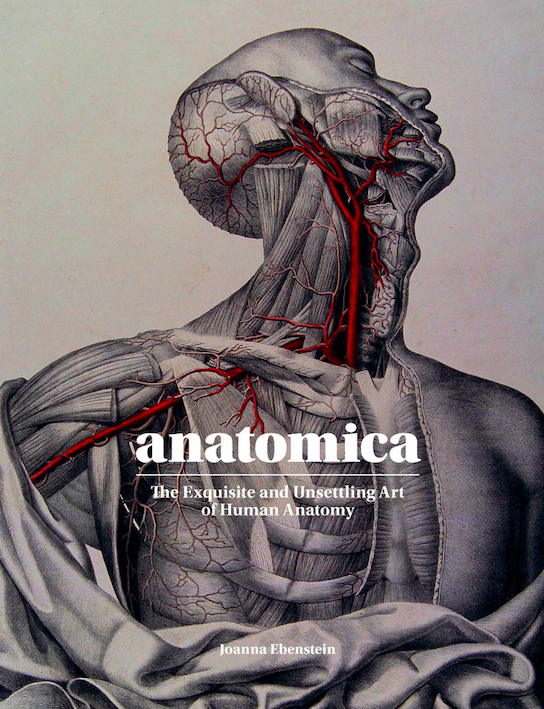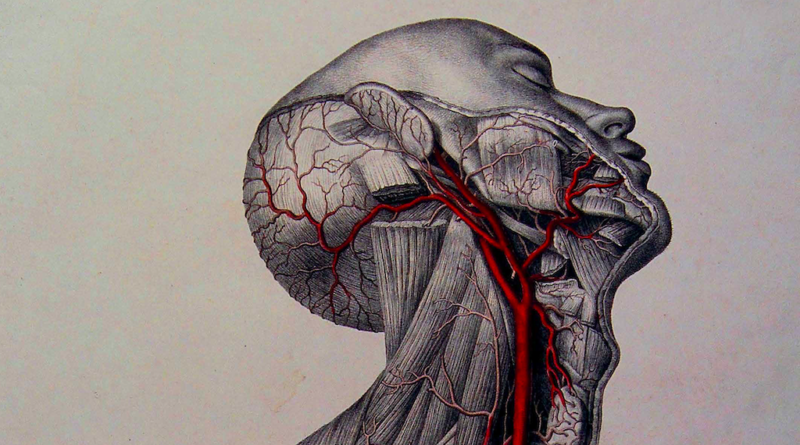REVIEW: ‘Anatomica: The Exquisite and Unsettling Art of Human Anatomy’ by Joanna Ebenstein
Anatomica is a new book by Joanna Ebenstein. Image courtesy of Laurence King / Provided with permission.
Anatomica: The Exquisite and Unsettling Art of Human Anatomy by Joanna Ebenstein is a fascinating and morbid look at the intricately drawn art that has graced the pages of medical books throughout the centuries. By focusing on the different parts of the human body, this coffee table tome offers readers a rare chance to see how the human body has been described, detailed, autopsied and understood throughout various stages of the past, including the Renaissance, the Victorian era and Modern times.
The images on display will not make most stomachs that queasy. In fact, there are several interesting and beautiful images of the stomach itself. Plus there are visual depictions of the brain, tongue, eyes, ears, hands, feet, heart, liver, stomach and genital organs. It’s a full-body examination that proves endlessly engaging and wonderfully categorized by body part.
Each of the paintings and drawings are displayed in large, colorful format, allowing readers to see the blues of the vein system and the reds of the bloods vessels. More intimate engravings are also included, and there’s a fair share of examples from eastern medicine practices (that said, the book is largely based on European or western scholarship).
Some of the terms that are repeated and lodge themselves into the brains of the reader: écorché, which is a depiction of the human body without its skin, and memento mori, a piece of art meant to serve as a reminder of death. There are anterior and posterior views of the different parts of the body, and some interesting passages about the subjects for these paintings. At first, the cadavers of convicted criminals were utilized by scientists and artists, and eventually that branched out to unclaimed bodies and the corpses of the poor. That’s a haunting consideration for Anatomica: How many of these images are drawn from criminals? What was their crime? Did they know their body would be used for scientific knowledge?
This visual history serves many purposes. Yes, it definitely tickles the morbid curiosity of the reader, although in some ways “morbid” is not the adjective that immediately jumps to mind when reading Anatomica. Many of the illustrations are clearly based off cadavers, but others seem to be teeming with life and energy — albeit without any skin or perhaps a pair of missing lungs because they were getting in the way of detailing the inner organs of the upper torso.
For college students taking an Anatomy & Physiology class, Anatomica is important reading because it adds social context to the images one can find in scholarly works. For example, Ebenstein uses some plates from Gray’s Anatomy, a foundational text that is still used today. She also focuses in on a few key artists and scientists who advanced anatomical knowledge and inquiry. Although the book is less history book and more art book, there are many interdisciplinary lessons, encompassing the natural sciences, the history of surgery and medicine, the art of the human form, and the understanding of the human body.
Fascinating tidbits are sprinkled throughout these 200-plus pages: the perceived acupuncture points of the body, the mystical parts of the hand used in palmistry, the iconography that sometimes accompanies depictions of the human body, the unfortunate and troublesome belief in eugenics amongst some in the scientific community, the long time it took anatomists to understand and respect the female body, the use of color to highlight different aspects of the muscular and nervous systems. It should also be noted that most of these art objects are of healthy human bodies. What cancer or degenerative diseases might do to the organs is largely not found within these pages.
Anatomica promises “exquisite” and “unsettling” artwork of the human body, and it certainly delivers. These images have a strange and alluring beauty, and having the reader understand their social and scientific context only heightens one’s curiosity in understanding the developments that have shaped anatomical knowledge throughout history. Ebenstein has offered this compendium less to frighten or weird out her readers and more to enlighten them, perhaps leading these pieces of work to simply being called exquisite and not unsettling anymore.
By John Soltes / Publisher / John@HollywoodSoapbox.com
Anatomica: The Exquisite and Unsettling Art of Human Anatomy by Joanna Ebenstein. Laurence King. 272 pages. 250 illustrations. Click here for more information.


